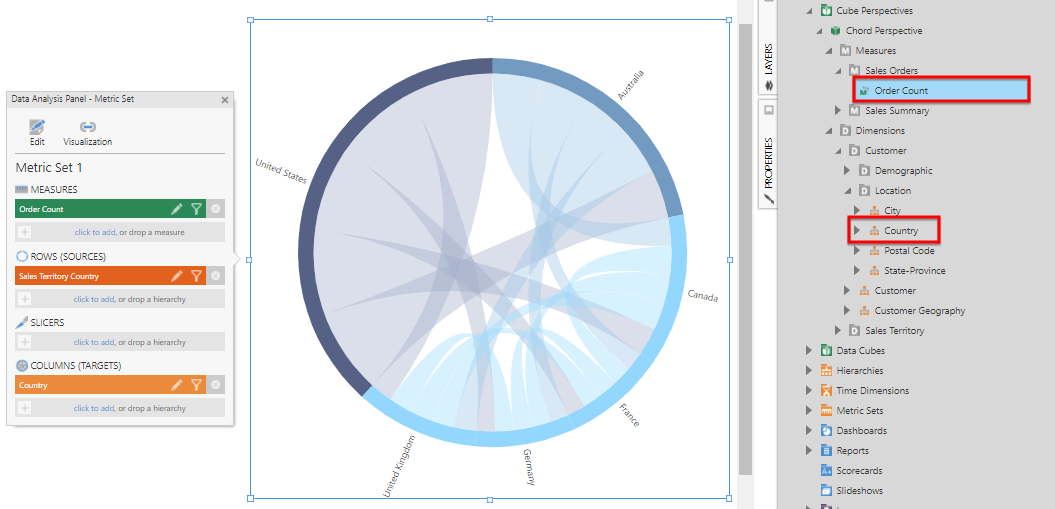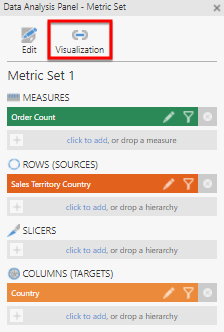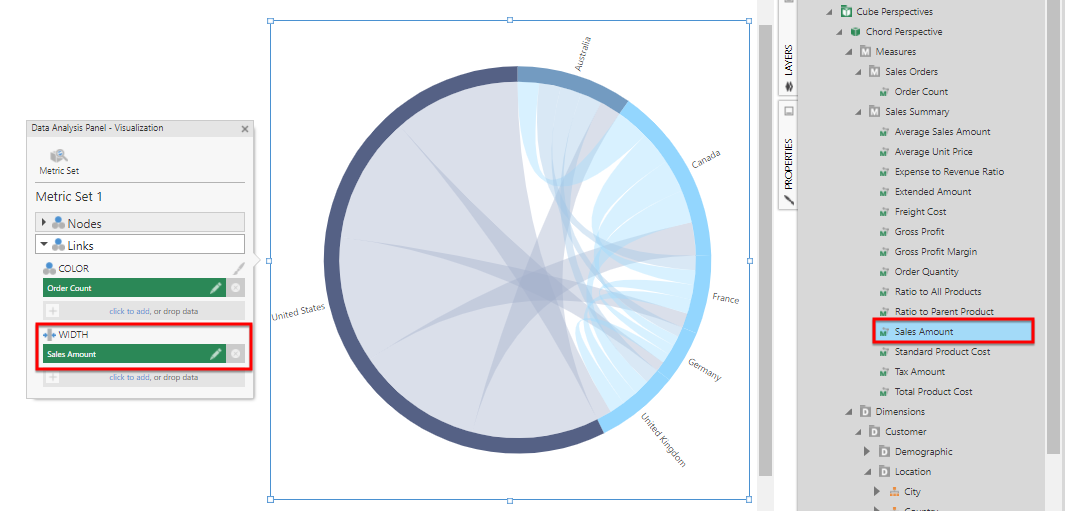Using a chord diagram
1. Overview
A chord diagram displays interrelated data arranged around a circle, and the quantities between each pair of items.
While other relationship visualizations often show multiple levels of a hierarchy or multiple clusters, chord diagrams visualize the relationships between items in a single level or set.
2. Add a chord diagram
In the toolbar, choose Data Visualization or Re-Visualize, and select Chord Diagram.
If you have a blank chord diagram and have not added data yet, drag a hierarchy or a column identifying items to Rows in the Data Analysis Panel.
The diagram is displayed as a circle with "nodes" for each item.
Drag a second hierarchy or column identifying items to Columns in the Data Analysis Panel.
To get the most out of a chord diagram, both hierarchies should refer to the same items, but one should represent a source, such as the "from" field of a message or a shipping origin, and the other should represent a target such as the "to" field of a message or a shipping destination. Assign sources to Rows and targets to Columns.
Drag a measure (numeric data) to Measures in the Data Analysis Panel. This measure is used to visualize the quantities transfered from each source to each target as semi-transparent filled "links" of varying widths.

Two Auto Color Rules are created based on the measure: one for the nodes and one for the links. You can modify the settings of each rule by switching to the Visualization tab on the Data Analysis Panel and clicking the brush icon next to the respective Color heading, or by going to the Design (or Look) tab of the Properties window and selecting the respective Auto Color Rule.
If you prefer to use a palette of colors and assign each node a colour in sequence, you can delete the Auto Color Rules or un-assign the measure from under Color in the Data Analysis Panel. In the Properties window's Design (or Look) tab, under Palette, you can customize the color palette instead.
3. Change the link width measure
The first measure selected when visualizing as a chord diagram is normally used automatically to determine the widths of the links between each pair of nodes. You can assign or change which measure is visualized as links as follows:
Select Visualization in the Data Analysis Panel.

Click Links and find the Width heading. You can remove a measure here if one is already assigned, and add a measure to use for determining link widths.
The width of each link is now defined by this measure's values.



